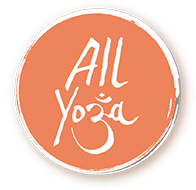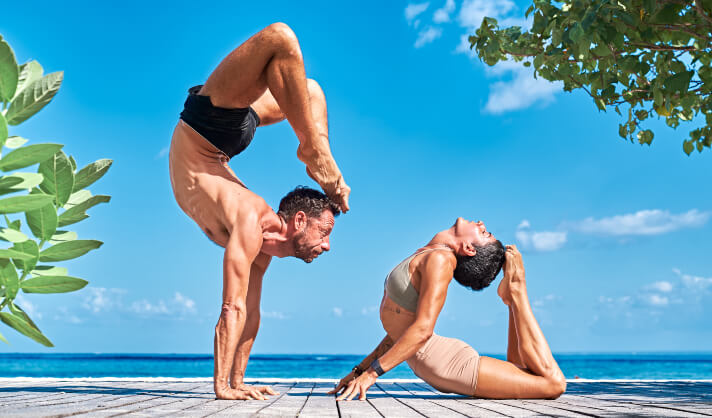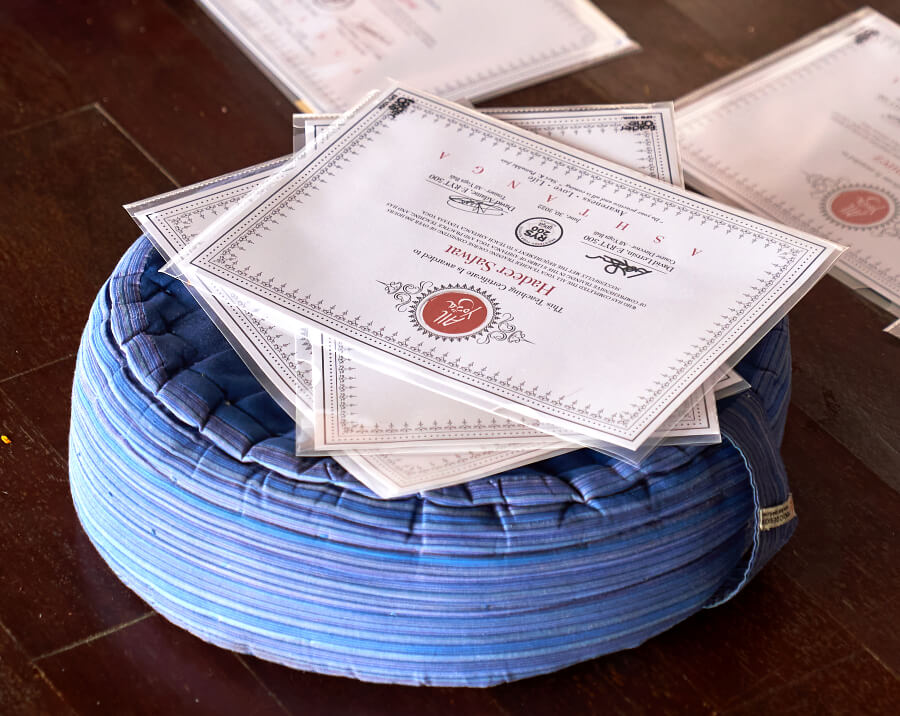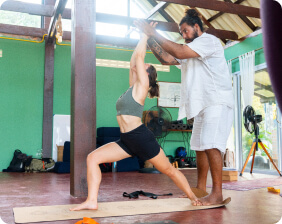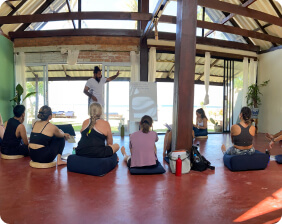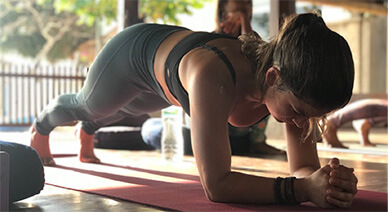200 Hours Yoga Teacher Training Course
Since 2009, our 200 hours yoga teacher training course in Bali and Thailand has helped over 2300 Yoga lovers to realize their dreams of becoming yoga teachers and deepen their yoga practice. We provide the most comprehensive 200-hour yoga course based on the Ashtanga Vinyasa yoga tradition and modern Vinyasa Yoga style. After establishing a solid foundation, we will explore other yoga practices such as Rocket Yoga, Yin Yoga, Creative Vinyasa flow, and more.
get the course brochure
Yoga Teacher Training Course
Upcoming Dates
Yoga Teacher Training Cost
*Signup 3 months before the course starting dates.
- Tuition with experienced teachers in an intimate small-class setting
- 200 hour yoga course materials
- Daily snack and refreshments
- Yoga Alliance recognized certificate (upon graduation)
- FREE accommodation (for first 10 sign ups)
Our Special Offers
- USD 800 DISCOUNT if signing up 3 months before start date.
- FREE ACCOMMODATION for the first 10 signups!
- SAVE USD 1300 when paying in full 4 months in advanced
- EXTRA USD 200 DISCOUNT if you join with a friend.
Get the Course Brochure
About Our 200 Hour Yoga Teacher
Training Course
Our course is limited to 22 students only
Yoga at the Source
- Lineage of yoga
- Yoga History
- Yoga Sutra of Patanjali
- 8 limbs of Ashtanga Yoga
- Ashtanga Vinyasa lineage: From Krishnamacharya, Pattabhi Jois, to yoga as practiced today
- Yoga subtle anatomy: chakras, kundalini, energy work
Kriyas, Pranayama & Meditation
- Cleansing and purifying practices
- Nauli Kryas
- Controlling the breath, controlling the mind
- Purpose of pranayama
- Introduction and daily practice of meditation
- Focusing within, power of mindfulness and attention
The Ashtanga Vinyasa System
- Working with the breath: Ujjayi breathing
- Bandhas integration, the magic element
- Drishti and inner focus
- Vinyasa, connecting breath and movement
- Building a self-practice, Ashtanga Yoga Mysore style
The Practices
- Primary series of Ashtanga Vinyasa Yoga
- MPS, Modified primary series
- Rocket Yoga Vinyasa
- Creative Vinyasa flow
- Yin Yoga
- Restorative Yoga
- Functional Movement Class
- Yoga Conditioning
- Acro Yoga Workshop
Asana Clinic
- Yoga Poses (Sanskrit and English)
- Standing, seated, and finishing asanas of the Primary Series
- Anatomy of the poses
- Practice and benefits of the asanas
- The art of adjustment and modification
Starting to Fly
- Jump back / jump through
- How to do inversions safely
- Learning to fall
- Headstand – Elbow stand – Handstand
- Arm balance progression
- Towards floating
The Art of Teaching & Becoming a Great Teacher
- Principles of teaching
- Finding your inner teaching voice
- Learn the three main teaching methods: verbal, visual and physical
- Etiquette and responsibilities in the classroom
- The business of Yoga: How to market yourself in the yoga community
- Develop your personal teaching philosophy
- Practice Teaching
- Science of sequencing

Each morning of your yoga teacher training course starts with kriyas, pranayama, and meditation practices, followed by a led 90 minutes yoga class. The afternoon consists of lectures, practical workshop, and group teaching. The lecture topics will change weekly with different subjects, including functional anatomy, yoga philosophy, the history of yoga, and class sequencing.
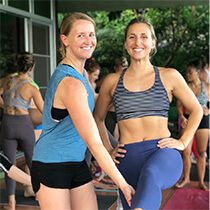
You will also learn how to do practical hands-on assisting, postural alignment, and the proper use of yoga props, and discover cutting-edge approaches to the art of teaching yoga. We will explore the ethical topics of yoga teaching, practical business marketing skills, pricing, and how to build your online presence.
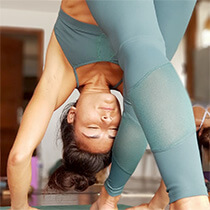
Day 10 of the 200 Hours yoga teacher training course is when you get introduced to self-practice (Mysore style), where you and your fellow trainees practice in the same room but on your own. During the Mysore-style class, the teacher will work with you individually, providing you with personal feedback and guidance to improve your practice and go deeper into your body.
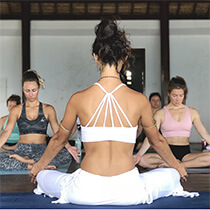
The last part of the yoga teacher training course will focus on integrating all the knowledge you received over the past few weeks. Upon graduating the yoga course, you will be a confident and professional yoga teacher, ready to inspire your future students and spread your love of yoga.
| TIME | ACTIVITY |
|---|---|
| 7:30am–9:00am | Kryas, Pranayama and Meditation |
| 9:30am–10:30am | Led Yoga Class |
| 10:30am–12:30pm | Brunch / Break |
| 12:30pm–14:30pm | Lecture with Guest Teacher (Philosophy, Anatomy, Group discussion) |
| 14:30pm–15:00pm | Tea Break |
| 15:00pm–17:00pm | Elements of Teaching & Asana Clinic |
| 17:00pm–18:00pm | MPS (Led class or Mysore class) |
What you will leave the course with
Upon completion of the 200 Hours Yoga Teacher Training Course, you will leave as an empowered, knowledgeable, and confident yoga teacher who can safely lead inspirational yoga classes for all levels.
You will be able to teach:
- Modified Primary Serie (MPS) of Ashtanga Vinyasa Yoga, perfect for beginner.
- Traditional Ashtanga Vinyasa Yoga (intermediate, advanced)
- Creative Vinyasa Flow sequence (all level)
Yoga Teacher Training Requirements
We welcome in our 200 hrs yoga teacher training course all dedicated yoga students ready to transform and grow their yoga practice on and off the mat while embracing a yoga lifestyle.
Before signing up for the 200 hours Yoga teacher training, we recommend that you have practiced Ashtanga Vinyasa yoga or another Yoga style for at least four to six months consistently, or have sports/fitness training at a medium to high intensity.
Get the Course Brochure
Yoga Alliance Accreditation
- Teach anywhere in the world, We are registered with the Yoga Alliance
- The 200 hrs yoga teacher training course is fully accredited with Yoga Alliance. Graduates will be eligible to register their complete hours of Continuing Education (CE) towards their RYT registration.
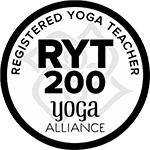
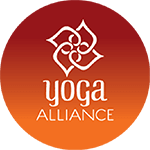
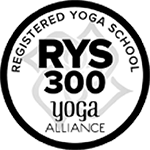
Why Choose All Yoga Training for your YTT?
1. Decade of experience running 200 hours yoga teacher training course
While many schools selling 200 hour yoga courses have been created in the past 5 years, All Yoga has been offering 200 hours yoga teacher training courses for more than a decade, certifying over 2000 students worldwide under the vision to share the practice of yoga widely and make the world a better place. Based on that experience, our program is always evolving and being refined continuously.
Over the years, our methods have been proven repeatedly, creating the best teachers in the industry on board. All Yoga graduates regularly get praised for their quality of teaching right after finishing the yoga course.
2. Ever improving and refined teaching methodology
Surprisingly, many yoga teacher training courses don’t emphasize the teaching aspect of a yoga teacher training, focusing more on sharing knowledge and information. We regularly welcome already “certified yoga teachers” lacking the tools to properly lead yoga classes with confidence and expertise. While there is a lot of yoga theory to learn, our yoga program has a strong focus on practical teaching methodologies, enabling the student to find their own yoga voice and style.
From day 1, you will practice teaching exercises. Then, progressively building up day by day, we will prepare you to share your passion for yoga with the best teaching tools..
You will leave the course ready to teach yoga classes safely and with confidence, inspiring your yoga students.
3. Most Experienced teachers for dedicated subjects
The standard 200Hr yoga teacher training course is often a single yoga teacher leading a yoga training and covering all kind of subjects such as asana, anatomy, philosophy, business, etc. But our approach is different.
Over the years, All Yoga has proudly built a team of yoga teacher trainers being experts in their fields. Instead of one single yoga instructor teaching all subjects, you will meet different teachers, who share their individual passion and specialties with you. All of them have decades of experience in teaching yoga classes, and most importantly are highly trained and skilled to lead Yoga Teacher Training programs. Teaching from the heart with passion, our yoga trainers maintain the vision of All Yoga by creating a safe environment for our students to explore and experience the transformative yoga lifestyle.
4. Quality vs. Quantity: only 20 students per yoga course
As the demand for new yoga teachers increased, some schools don’t hesitate to accept 25+ students in one yoga classe. We surely made this mistake in the past.
But through our years of experience, we have found that the perfect number for a yoga course is 20 students. Small class size is the best learning environment for everyone. We keep it this intimate as we want to make sure we can offer personalized attention and guidance to each student. This ensures high quality knowledge transmission and great group work & sharing in a relaxed and friendly atmosphere.
5. Keeping it real: Yoga supported by latest research
Our teachings offer a modern approach based on the latest scientific research. Physiology, psychology, functional anatomy within a yoga context, all covered within our yoga training, provide our students with science backed practice to inform their teaching.
We believe that it is the responsibility of a yoga teacher to provide yoga classes that are safe, informed yet progressive, which is why our trainings explore and dissect current research practices to see how this can be implemented into the modern yoga teacher’s teaching vocabulary. All Yoga provides a yoga teacher training course which gives you the practical tools to apply your knowledge in the real world. Real Yoga training for real people.
6. Transformative practices – on and off the mat
Our 200hr Yoga teacher training course is based on the traditional Ashtanga Vinyasa Yoga Practice as we believe it’s the best foundation and structure to prepare to an aspiring yoga teacher.
However, our special flavor will be the practice of Rocket Yoga, a more fun and playful style which will challenge and improve your practice. To balance those dynamics style, yin yoga will be offered weekly.
While most yoga classes are led, we will gradually prepare you to receive the beautiful gift of a daily self-practice, Mysore style, which is highly meditative and allows for inward focus and heightened awareness of breath and individual movement.
Finally, a strong emphasis will be placed on inward practices and self knowledge with daily meditation and mindfulness practices.
7. The All Yoga Family – Global Network and Lifetime Support
All Yoga has built an astounding Yoga Community with over 2300 graduates from all around the world. Spending nearly a month together with like-minded people creates lifetime bonds and friendships. We run an All Yoga graduates Facebook group to keep in touch, to share the latest news and it gives every graduate the opportunity to promote their offerings. With such a global network, the All Yoga family cohesively provides support to our new students and alumni students. Our locations worldwide are still growing! Currently you find us in Bali and Thailand.
As a graduate, you will always be welcome to visit us and practice at any of our venues!
Get the Course Brochure
Yoga Course Locations

Bali is a renowned yoga paradise. Immerse yourself in our Nusa Lembongan training, and marvel in the beauty of striking ocean views. Our beachfront yoga shala enjoys gentle sea breezes and three open walls to keep the vibrant energy flowing. This Bali location offers stunning nature while still being very close to lively dining options, a variety of accommodation to suit every budget, and activities like snorkeling & diving or light hiking for your days off.

Experience personal transformation during your 200 Hours yoga teacher training course in Amazing Thailand. Our Koh Phangan course is located on a beautiful beachfront with clear turquoise waters. The accommodation and quiet hilltop setting is simple and free of distractions. It’s a wonderful place to tune into your practice and take a break from the hectic pace of modern life while experiencing the profound Thai culture.
A Day in a Teacher Training
Yoga Course Testimonials
Latest 2023 Graduates
After my rocket yoga teacher suggested this training back in Germany I finally decided to travel to Indonesia, to do my training near the beach. I have wanted to make a YTT since 2019 and I think it was the perfect time and perfect school for me. It was a full program with a really strong methodology to learn properly and fast ( teachers teach from their hearts). I learned that you can make such progress in a short time if you make an effort. In the training, I learned a lot more than I thought I could learn; not just my asanas; like headstand or my chaturanga and picha but also learned about my breath, how to connect more with my body, philosophy and anatomy. Although my background career is different from yoga, All Yoga had the perfect approach how to teach. I discovered how much fun it is to create a sequence and I will continue this journey back at home. Thank you all, from all my heart!
read more ×I have to say that this training was way more than what I expected. I love how you integrate different elements into the practice, like meditation, philosophy but also anatomy. This training prepared me to become a teacher but it has way more impact in my life and personal journey. It arrived in a moment where I really needed it and it helped me to come back to myself and back to be resilient. David is a great teacher with a big heart and tons of knowledge. Kim is a very beautiful and creative being and Sonia is so sweet and humble with her practice. I learned a lot from 3 of them. One thing that I think can be improved is the toilets of the shala. Other than that I love the whole experience. Until next time
read more ×A beautiful break on a beautiful island with beautiful people at a moment in my life when I really needed it. A breath of fresh air healing for the bodies and the soul. David and his team did a great job of creating an open and safe environment. The learning process was intense and tiring but rewarding in so many ways. I feel so grateful for having experienced this adventure and I will forever cherish these life-changing 3 weeks. Thank you again for everything!! Will definitely come back and say Hi! and practice another full or MPS ☺️
read more ×At the very beginning, the teachers asked us a question: What is Yoga? In the end they asked the same question again. This makes you realise how much you’ve been going through in only 3.5 weeks. Lots of growth and learning. I cried a lot but these were all happy tears. I stayed in the dorm that All Yoga provided free of charge and the other 9 girls had so much fun here including a morning ritual. The teachers are so genuine and very supportive, answering any questions. It was such an unforgettable experience here with All Yoga. I highly recommend this course.
read more ×Taking the yoga teacher training with All Yoga has been one of the best decisions in my life. It was challenging me physically, even more so emotionally. The rollercoaster I’ve experienced here allowed me to grow, evolve and return to my core and spirituality. What started on the first day with tears of frustration has evolved into tears of joy and gratitude on the very last day. I’d like to thank All Yoga and especially the teachers for taking me on this ride, I’ve completely fallen in love with Ashtanga, with this island and the journey I’m on. It’s been a life-changing experience that goes way beyond becoming a yoga teacher.
read more ×I signed this yoga teacher training not because I wanted to teach yoga but to be aware of myself and the health benefits that lie within yoga. I got all of it and more leaving me inspired to maybe teach one day. Thank you all.
read more ×FAQ
Can beginners join the 200 Hour yoga teacher training course?
We recommend our students to prepare for the yoga teacher training course by having a minimum of 3-4 months of dedicated yoga practice. This could be online, in yoga studios, or home practice. This should also include Ashtanga classes to help yourself prepare both physically and mentally! We also welcome beginners if they have a fitness or movement related background.
How to prepare for a yoga teacher training?
Preparing for a yoga teacher training program can be an exciting and transformative journey. To ensure a successful and fulfilling experience, it is essential to lay a strong foundation by familiarizing yourself with different yoga styles, deepening your own practice, and nurturing your physical, mental, and emotional well-being.
Begin by exploring various yoga styles to determine which resonates most with you. Attend classes, workshops, or online sessions that focus on different techniques and philosophies, and take note of the elements that inspire and resonate with you. Developing a consistent personal practice is also essential, as it helps build strength, flexibility, and familiarity with essential asanas (postures). Incorporate pranayama (breathing exercises) and meditation into your daily routine to enhance mental focus and emotional balance. Additionally, read up on yoga’s history and philosophy to broaden your understanding and enrich your teaching approach. Prioritize self-care, eat a balanced diet, and maintain a healthy lifestyle to support your physical and mental well-being during this transformative process.
For more tips on how to prepare a yoga teacher training, have a read to our popular blog here.
I haven’t practiced much Ashtanga… is this program right for me?
Our students come from various yoga backgrounds, from Vinyasa Flow to Yin Yoga!
All Yoga’s 200 Hours Yoga Teacher Training will give you the skills to deepen your Ashtanga Vinyasa practice and provide the tools to teach a Modified Primary Series to beginners. Before joining us, we advise students to engage with Ashtanga classes either in yoga studios or online to have a better understanding of the practice.
I have an injury / ongoing condition, can I still join the yoga teacher training course?
When you apply, please do tell us if you have an injury or condition that you think may impact your training experience. Our teaching team is there to support you! We support our students as individuals, so we are able to adapt certain elements and support you through your journey.
If in doubt, always seek guidance from your doctor!
I’m not an English native speaker, can I still attend the yoga training course?
Absolutely! Students join us from all around the world, it’s what makes our yoga teacher training so special. Our yoga teachers are no different! We have an international teaching team on hand to help you, many speak multiple languages! We do ask that you are able to understand and speak English.
Do I need to have an “advanced” yoga practice to join the yoga teacher training?
There’s no need to be able to perform any specific yoga poses like putting your feet behind your head or having a perfect handstand! To join a Yoga certification, we are looking for emotionally mature, dedicated practitioners who are committed to learning with an open mind. It’s required that you maintain a personal practice. We ask that before attending, you have had a minimum of 3 months of consistent yoga practice with dynamic styles such as Ashtanga or vinyasa flow.
Will I be able to teach yoga worldwide after receiving my yoga certification?
After completing the yoga teacher training course, you will be certified to register with the Yoga Alliance as a RYT 200 yoga teacher. The Yoga Alliance is the most well-known yoga teaching organization to register your status as a professional yoga teacher and start your yoga career.
I just want to deepen my yoga practice, is the All Yoga training course right for me?
Many of our yoga students simply want to gain a solid foundation and deepen their practice, study yoga philosophy / tradition, form healthy lifestyle habits and meet a loving community of like-minded yogis!
It is entirely your choice, whether or not you decide to become a yoga instructor. But along the way, you might discover your yoga teaching voice and get exited to share the love of the yoga practice and the yoga benefits. You will have all the tools to do so.
How do I secure my spot & receive the early bird discount?
Reserve your placement by sending a 650 USD deposit via our Payment Gateway.
To guarantee the early bird discount, be sure to register before the deadline.
Do you help organize travel plan and accommodation for your students?
Yes, definitely! We can help you organize your accommodation and travel plan according to your preferences. Also, if you one of the first 10 students to sign up, the accommodation will be included. You will get 23 nights free in our resort partner!
I love Vinyasa, is this yoga course right for me?
Absolutely yes! The origin of Vinyasa is Ashtanga, which provides the foundation for all sequences. Being able to teach Ashtanga Vinyasa yoga will take your yoga teaching skills and also your own practice to the next level. Through an Ashtanga practice you learn a more traditional part & a deeper meaning of yoga and it gives you the opportunity to connect deeply to the Yoga Philosophy. We are convinced you’ll fall in love with the Ashtanga practice.
Will I be ready to teach once I complete the training?
Yes! We pride ourselves on offering personalized and personal feedback from DAY ONE. Our trainings & teachers give you the yoga teaching skills, knowledge and instruction to be able to teach not only a modified primary series but also the confidence to explore your own creativity and flows for your own classes. We give you the foundation for your yoga teaching practice and help you find your own teaching voice.
I don’t want to become a Yoga Teacher, can I still do the yoga training?
Absolutely. Our 200 hour yoga teacher training gives you the opportunity to simply deepen your own personal practice. Our trainings are designed to serve those who are looking to become yoga teachers but also to those who are wanting an immersive yoga experience in a beautiful country. You will still gain the teaching certificate at the end so you will always have the option to teach if you wish.
I have already done a 200 hour yoga course , can I still join yours?
We are forever yoga students! Often welcome already qualified teachers to our trainings, who are looking to deepen their practice in a new style, gain guidance by one of our amazing teaching teams or to give them the opportunity to be the student for a change.

Get our 200 hour Yoga
Teacher Training Brochure Now!
Get a full summary:
- Course Curriculum
- Price & Special Discount
- Accommodation
- Requirements
- And all other details
With Full Details
Copyright © 2024, All Yoga International ltd. All Rights Reserved
Privacy Policy